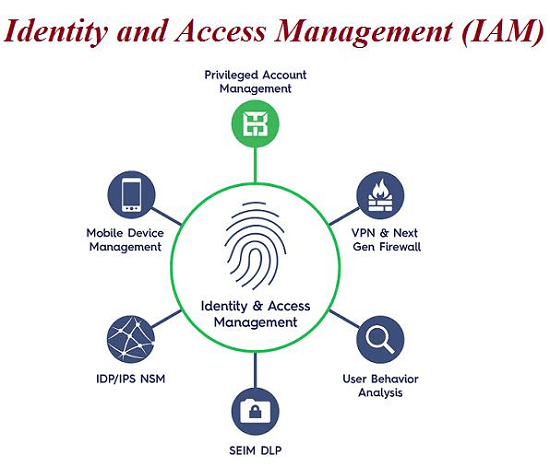A QUICK GUIDE TO ACCESS AND IDENTITY MANAGEMENT
Businesses—regardless of size—need to ensure that their most valuable resources are protected at all times. This includes user credentials, which are the most common targets for cybercriminals.
This is where access and identity management comes in.
WHAT IS ACCESS AND IDENTITY MANAGEMENT?
Access and identity management is the IT security discipline, framework, and solutions for controlling digital identities. This is also often referred to as identity management.It includes the following responsibilities:
- Provisioning and de-provisioning of identities
- Security and authentication of identities
- Authorization to access resources and/or carry out certain actions

The ultimate goal of identity management is to ensure that any given identity has sufficient access to the right resources within the correct context.
How Access and Identity Management Systems Work?
Access and identity management systems are designed to perform three key tasks. This is to iIdentify, authenticate, and authorize.
This means that only the right users should have access to computers, hardware, software apps, and other IT resources. Only the right persons should also perform specific tasks.
The identity management system framework is comprised of core components, including:
- A database with users' identities and access privileges
- Access and identity management system tools for creating, monitoring, adjusting, and deleting access privileges
- A system for assessing login and access history
DEFINE ACCESS AND IDENTITY MANAGEMENT ORGANIZATIONAL POLICIES
Identity management system helps ensure that certain employees have the access they need and that resources, such as systems, data, and applications are inaccessible to unauthorized users.
This system also takes care of the following tasks:
- How identities are determined and the roles they are then assigned
- The systems, information, and other areas protected by access and identity management
- The proper protection layers and access for sensitive data, systems, information, and locations
- Adding, modifying, and removing individuals in the identity management system
- Adding, modifying, and removing a user's access rights in the identity management system
Three Common Systems Used for Access and Identity Management
There are a number of technological solutions that could simplify password management and other aspects of access and identity management. Some of these solutions are:
Single Sign On (SSO)
Single Sign On enables users to authenticate themselves only once. After which they are granted access to all the software, systems, and data they require without the need to log into each of those areas individually.
Multi-Factor Authentication
This access and login system uses a combination of different security measures to authenticate individuals and grant them access. This may include:
- Something the user knows, like a password
- Something the user has, like a security badge
- Something the user is, like a fingerprint
Privileged Access Management
This system is usually integrated with the employee database and pre-defined job responsibilities to determine and provide the access that users need to perform their roles.
How Access and Identity Management Control Interactions with Data and Other Systems?
Innovative access and identity management technology can do way more than allowing or blocking access to data and systems. This solution can also:
- Limit access to subsets of data where only authorized employees can access certain parts of systems, databases, and information.
- Allow view access only where users can view data but they cannot add, update, or amend it.
- Permit access only on certain platforms where specific roles may have access to operational systems, but not development or testing platforms.
- Enable access to create, amend, or delete data but not to transmit it. Some employees may not be able to export or import data outside the system, preventing exposure to other third parties and applications.
Put simply, there are various ways to implement access and identity management policies to identify and establish exactly how certain users can access systems and data according to the company's specific needs.
Benefits of Access and Identity Management
Here are some of the most important reasons why implementing identity management in your company is vital:
Access and identity management improves security
By properly managing user access, companies can lessen the risks of data breaches, identity theft, and unauthorized access to confidential information. In terms of security, access and identity management can do the following:
- Prevent the spread of compromised login credentials
- Avoid unauthorized entry to the organization's network
- Provide protection against ransomware, phishing, hacking, and other kinds of cyber attacks
Access and identity management streamlines IT workload
Security policy updates often prompt changes to all access privileges across an organization. To mitigate the problems associated with this, identity management can automate some tedious IT tasks which minimize the number of tickets regarding password resets.
Access and identity management helps in compliance
Identity management systems can help companies meet the requirements of industry regulations, such as HIPAA and GDPR without a fuss.
Access and identity management promotes collaboration and boosts productivity
With a reliable identity management system, organizations can provide third-party entities (customers, suppliers, and visitors) access to their networks without risking security.
Access and identity management enhances user experience
It will be a lot more convenient for users when there is no need for multiple passwords to be submitted, earning you a great UX review.
Takeaways Identity Management
Access and identity management systems provide a great deal of confidence when implemented well. Your company will have the assurance that only authorized, authenticated users are able to interact with your systems, data, and valuable information.
Protect your IT environment with Xcitium. We provide security solutions that protect valuable data and meet industry standards.
